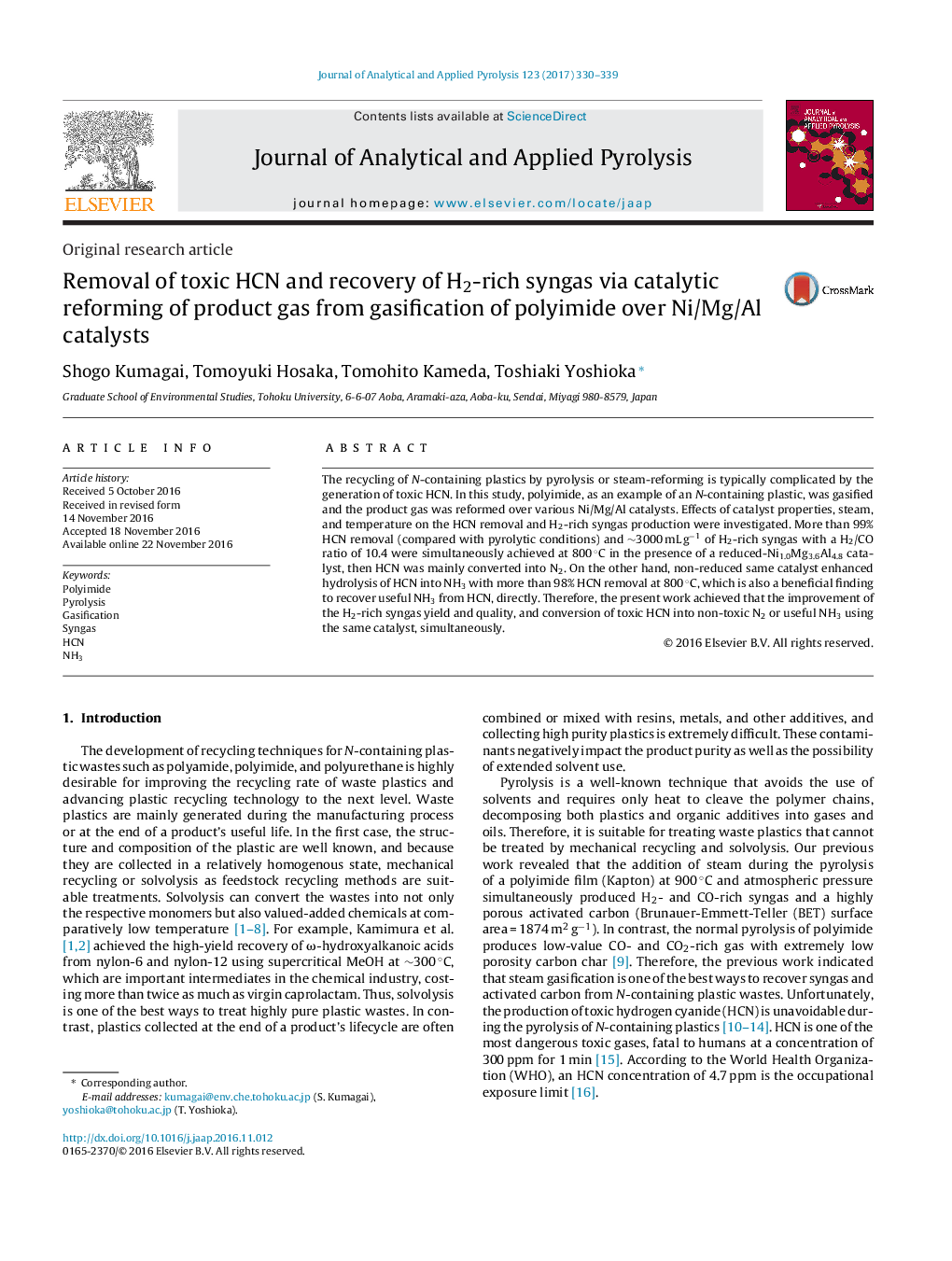| Article ID | Journal | Published Year | Pages | File Type |
|---|---|---|---|---|
| 5134552 | Journal of Analytical and Applied Pyrolysis | 2017 | 10 Pages |
â¢Steam gasification of polyimide produced H2-rich syngas with toxic HCN.â¢HCN containing syngas derived from polyimide was reformed on the Ni/Mg/Al catalysts.â¢Almost perfect HCN removal and improvement of syngas yield and quality were achieved.â¢Non-reduced Ni/Mg/Al catalysts are suitable for conversion HCN into NH3.â¢Reduced Ni/Mg/Al catalysts are suitable for conversion HCN into N2.
The recycling of N-containing plastics by pyrolysis or steam-reforming is typically complicated by the generation of toxic HCN. In this study, polyimide, as an example of an N-containing plastic, was gasified and the product gas was reformed over various Ni/Mg/Al catalysts. Effects of catalyst properties, steam, and temperature on the HCN removal and H2-rich syngas production were investigated. More than 99% HCN removal (compared with pyrolytic conditions) and â¼3000 mL gâ1 of H2-rich syngas with a H2/CO ratio of 10.4 were simultaneously achieved at 800 °C in the presence of a reduced-Ni1.0Mg3.6Al4.8 catalyst, then HCN was mainly converted into N2. On the other hand, non-reduced same catalyst enhanced hydrolysis of HCN into NH3 with more than 98% HCN removal at 800 °C, which is also a beneficial finding to recover useful NH3 from HCN, directly. Therefore, the present work achieved that the improvement of the H2-rich syngas yield and quality, and conversion of toxic HCN into non-toxic N2 or useful NH3 using the same catalyst, simultaneously.
Graphical abstractA novel process which can simultaneously produce H2-rich syngas and highly porous activated carbon with a selective conversion of HCN to N2 or NH3 using the same catalyst from polyimide has been achieved.Download high-res image (180KB)Download full-size image
